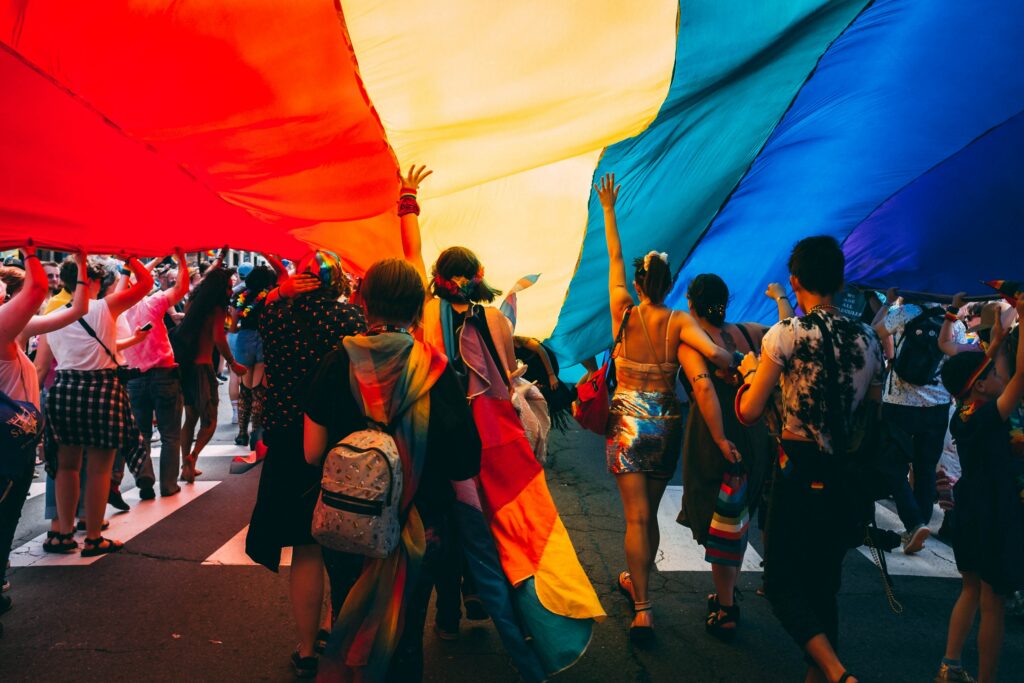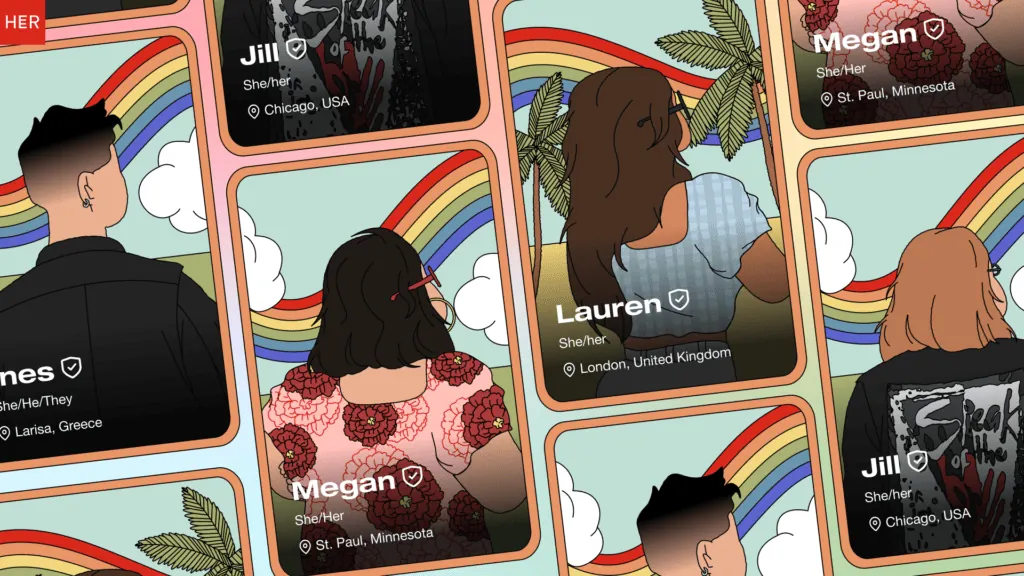Envision traversing a path of one mile in the footsteps of another. Better yet, imagine being the person who those shoes belong to – an individual part of a sexual minority. This might seem like a simple term, but it carries with it complex stories, experiences, and challenges.
In this ever-evolving world where diversity is celebrated more than ever, we still find some less-trodden paths. The path of sexual minorities can be one such journey filled with unique triumphs and trials. Can you picture that?
You’re about to delve into their lives – exploring identity and orientation, understanding their health-related issues, realizing how you can become an ally, navigating through sexual health concerns, and shedding light on gender identities within these communities.
So buckle up for an enlightening ride! Are you ready? Because what comes next could shift your perspective entirely…
Understanding sexual minorities
The term ‘sexual minority’ encompasses various categories, each reflecting the rich diversity of human sexuality. This includes folks who identify as lesbian, gay, bisexual or queer. Yet it’s not just about sexual orientation; gender identity plays a big role too.
Sexual orientation: what does it mean?
Sexual orientation relates to whom we’re attracted to romantically or sexually, and it’s independent of our gender identity.
Some sexual orientations include:
- Lesbian: A woman who is primarily attracted to other women.
- Bisexual: A person who is attracted to people of their own gender and other genders.
- Queer: An umbrella term used to describe those who do not identify as straight and/or cisgender. It can also be used as a personal identity label for those who identify as non-heterosexual and/or non-cisgender.
- Bicurious: A person who is curious or questioning their attraction to people of their own gender.
- Gay: A person who is primarily attracted to people of the same gender as themselves.
- Pansexual: A person who is attracted to all genders and/or regardless of gender.
- Fluid: A person whose attraction to gender(s) can change over time.
- Questioning: A person who is exploring their own sexual identity and/or is unsure of their sexual identity.
- Straight: A person who is primarily attracted to people of a different gender than themselves.
- Asexual: A person who does not experience sexual attraction.
- Demisexual: A person who only experiences sexual attraction after forming a strong emotional bond with someone.
- Polysexual: A person who is attracted to multiple, but not all, genders.
- Flexisexual: A person whose sexual orientation is flexible and can change over time.
- Homoflexible: A person who is primarily attracted to people of the same gender but can also be attracted to people of different genders.
- Heteroflexible: A person who is primarily attracted to people of a different gender but can also be attracted to people of the same gender.
- Androsexual: A person who is primarily attracted to masculinity, regardless of gender.
- Skoliosexual: A person who is primarily attracted to non-binary people and/or people who identify outside of the gender binary.
Note: These definitions are not exhaustive, and it’s important to note that sexual and romantic identities are personal and can vary from person to person.
Gender identity: what does it mean?
Gender identity is another facet that shapes us uniquely in this diverse world. It’s how we perceive and identify ourselves on the spectrum between male and female identities – including identifying as non-binary or transgender. Gender identity can be different than the sex assigned at birth.
Some gender identities include:
- Woman: A term often used to describe someone who identifies as female. However, not all people who identify as women are female-assigned at birth, and not all people who are female-assigned at birth identify as women.
- Non-Binary: An umbrella term for people who don’t identify as exclusively male or female. Non-binary people may identify as neither, a combination of genders, or something different altogether.
- Gender Fluid: A term used to describe someone whose gender identity changes over time or is not fixed to one specific gender.
- Trans Woman: A trans woman is short for a transgender woman, and refers to a person whose gender identity and/or gender expression is that of a woman, but was assigned the male sex at birth.
- Trans Man: A trans man is short for a transgender man, and refers to a person whose gender identity and/or gender expression is that of a man, but was assigned the female sex at birth.
- Intersex: A general term used for a variety of conditions in which a person is born with a reproductive or sexual anatomy that doesn’t seem to fit the typical definitions of female or male.
- Pangender: A term used to describe someone who identifies as all genders or many genders.
- Polygender: A term used to describe someone who identifies as multiple genders.
- BiGender: A term used to describe someone who identifies as two genders.
- Agender: A term used to describe someone who identifies as having no gender or being without a gender identity.
- Genderqueer: A term used to describe someone whose gender identity falls outside of the traditional male/female binary.
- Questioning: A term used to describe someone who is exploring their gender identity and is unsure of where they fit on the gender spectrum.
- Androgyne: A term used to describe someone whose gender identity is a combination of masculine and feminine.
- Neutrois: A term used to describe someone who identifies as having a neutral gender or no gender at all.
- Gender Non-Conforming: A term used to describe someone whose gender expression and/or identity don’t conform to traditional societal expectations of male/female.
- Two-Spirit: A term used by some Indigenous people to describe a male-bodied or female-bodied person (although not exclusively) with a masculine or feminine essence. Two Spirits can cross social gender roles, gender expression, and sexual orientation and can fulfill a third gender.
- Trans-Feminine: an umbrella term that describes a transgender person (generally, but not exclusively, one who was assigned male at birth), and whose gender is feminine and/or who express themselves in a feminine way. Transfemme people feel a connection with femininity but do not always identify as a woman.
- Trans-Masculine: an umbrella term that describes a transgender person (generally, but not exclusively, one who was assigned female at birth), and whose gender is masculine and/or who express themselves in a masculine way. Transmasculine people feel a connection with masculinity but do not always identify as a man.
- Womxn: An alternative spelling of “women” that is sometimes used to be intersectional and more inclusive of non-cisgender women.
Note: These definitions are not exhaustive, and it’s important to note that definitions are personal and can vary from person to person.
You can always head over to HER’s Glossary to better understand the many sexual orientations and gender identities that make up the wonderful alphabet soup we call home. Is that catchy?
The spectrum of sexual characteristics
Many tend to think about sex characteristics in binary terms: male/female based on physical attributes at birth, but nature has more variety than this simplistic division, which allows for differences in chromosomes, hormones, and reproductive organs, which can lead to variations known as intersex conditions.
Challenges faced by sexual minorities
The journey of sexual minorities is often filled with unique hurdles.
This wide-ranging palette of human experiences reminds us why it’s important to respect individual self-identification within sexual minorities because everyone deserves acceptance and love no matter where they fit into this vast landscape.
The impact of discrimination on Mental Health
Discrimination against sexual minorities doesn’t just harm their societal standing—it seeps into their psyche and contributes to mental health problems. According to the National Alliance on Mental Illness (NAMI), they are three times more likely than others to experience a mental health condition such as major depression or generalized anxiety disorder.
Panic attacks and eating disorders also run rampant in this community, largely due to discrimination-induced stress. For example, body image disturbance can result from constant scrutiny over one’s appearance, pushing some individuals towards unhealthy dieting practices or exercise routines.
Alcohol addiction is another serious issue faced by many within the LGBTQ+ community—a compounding factor that worsens existing struggles with peer victimization and self-acceptance. In fact, statistics show that those identifying as gay or lesbian have higher rates of substance use disorders compared to heterosexual peers.
Sadly enough, though, these aren’t standalone concerns; rather intertwined strands forming a complex web where each problem feeds off and amplifies the other—an aspect not lost on organizations like NAMI, which offer resources for those seeking help amidst such crises.
Being an ally to sexual minorities
The journey of being an ally isn’t always straightforward, but it’s essential in supporting sexual minorities. It involves recognizing and respecting all forms of sexual orientation and gender identity.
Understanding allyship
An ally doesn’t just sympathize; they take action. They advocate for human rights while using their privilege to amplify the voices within the sexual minority community. Allies challenge heteronormative beliefs by acknowledging that love comes in diverse forms.
You might be asking how you can help as an ally. Here are a few ways:
- Show empathy towards others’ experiences and struggles with substance abuse or mental health issues linked to discrimination.
- Familiarize yourself with campus/community resources that provide support services specifically tailored for sexual minorities like Capital Health Region Addiction Services.
- Promote strategic initiatives focused on equity, diversity, and inclusion – many organizations such as NIH Institutes have these priorities at heart.
This commitment may seem daunting initially but remember every step counts when advocating for equality. Start small: listen actively, educate yourself about different identities under the umbrella term ‘sexual minority,’ use inclusive language consistently – then watch your understanding deepen over time.
Sexual Health and sexual minorities
The topic of sexual health is broad, complex, and uniquely challenging for individuals who identify as part of a sexual minority. Whether it’s about understanding their own bodies or finding safe spaces to discuss concerns, these issues are real and often overlooked.
Navigating sexual health as a minority youth
Youth within the sexual minority community may face unique challenges when navigating their sexual health. Often, grappling with societal norms around gender identity and sexuality can make this journey more difficult.
A crucial aspect is understanding that having diverse sexual partners does not inherently pose higher risks for sexually transmitted diseases (STDs). Rather than labeling individuals, it is important to focus on behaviors like unprotected sex, which are the true indicators of STD risk.
This misunderstanding can lead to stigma towards young people within the LGBTQ+ community which only compounds existing struggles with body image disturbance or alcohol addiction due to peer victimization – factors leading many minorities to face even higher rates of STDs compared to heterosexual peers. Education focused on prevention methods, such as consistent condom use regardless of one’s orientation, should be emphasized.
LGBTQ+ youth are two-to-three times more susceptible than straight peers regarding mental illness resulting from prejudice-related stressors including violence, bullying, and family rejection.
Therefore, fostering an environment of understanding and acceptance is vital. It’s essential to remember that everyone has a right to accurate sexual health information, irrespective of their sexual orientation or gender identity.
A deeper dive into trans identities
We’ve mentioned ‘transgender’. It signifies someone whose gender differs from what they were designated when born – not necessarily male-to-female or vice versa. Research has shown, that roughly 0.6% of U.S adults identify themselves as transgender – that’s around 1.4 million Americans. That number might seem small in isolation but remember: everyone matters when discussing equality and understanding.
Trans individuals may not conform to binary genders; they could identify as non-binary or genderqueer instead. This can be hard for society at large to understand because we’re so used to thinking about everything (including ourselves) in terms of dichotomies: right vs wrong, man vs woman… But human experience is so much richer and more complex than that.
For example, a genderqueer person might not feel fully aligned with either male or female identity and instead embrace a fluid mix of both, none, or even unique gender expressions altogether. In the end, it’s all about individuality and authenticity – each person understanding their own self in their own way.
The importance of intersectionality
Understanding this intersectionality within sexual minority groups is crucial. People from these populations regularly confront more prejudice due to their race, ethnicity, or socioeconomic status. It is, therefore, imperative that we take action and provide the needed aid.
FAQs about sexual minority
What does the term sexual minority refer to?
A ‘sexual minority’ is a group that has sexual orientations or gender identities differing from the heterosexual and cisgender majority.
What is a sexual minority couple?
‘Sexual minority couples’ are partnerships where one or both individuals identify as LGBTQ+, distinguishing them from straight, cisgender pairs.
What are the different sexual diversity groups?
Sexual diversity groups encompass various orientations such as gay, lesbian, bisexual, transgender, queer/questioning (LGBTQ+), intersexed persons, and more.
What is the LGBT group in Arlington, VA?
The Arlington Gay & Lesbian Alliance (AGLA) in Virginia advocates LGBTQ+ rights and community engagement.
Unraveling the complexities of a sexual minority‘s life is no small task. It’s a world full of diversity, self-expression, and individuality.
We’ve dissected what sexual orientation and gender identity mean, showing they’re more than mere labels. We’ve spotlighted challenges like mental health issues stemming from discrimination that these communities face every day.
You now know how to be an ally – by understanding, supporting, and advocating for their rights. We also highlighted the unique sexual health concerns among young people within this community.
In essence, we dove deep into various aspects of transgender individuals’ lives too – part of our broader look at ‘sexual minorities.’ Remember these lessons as you move forward with newfound knowledge!







